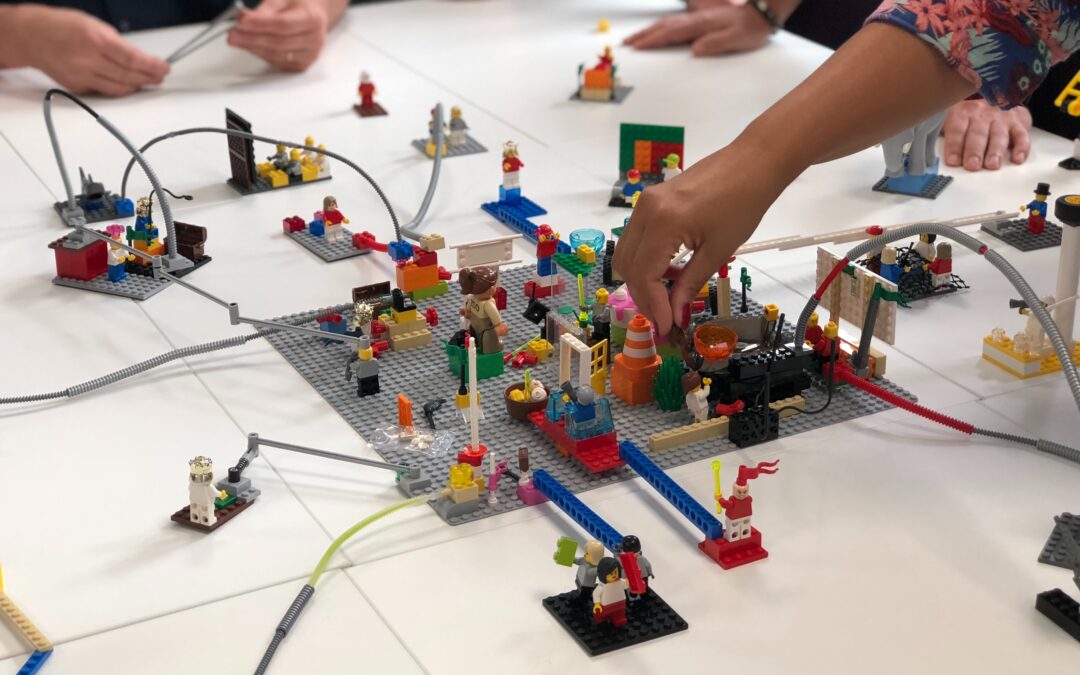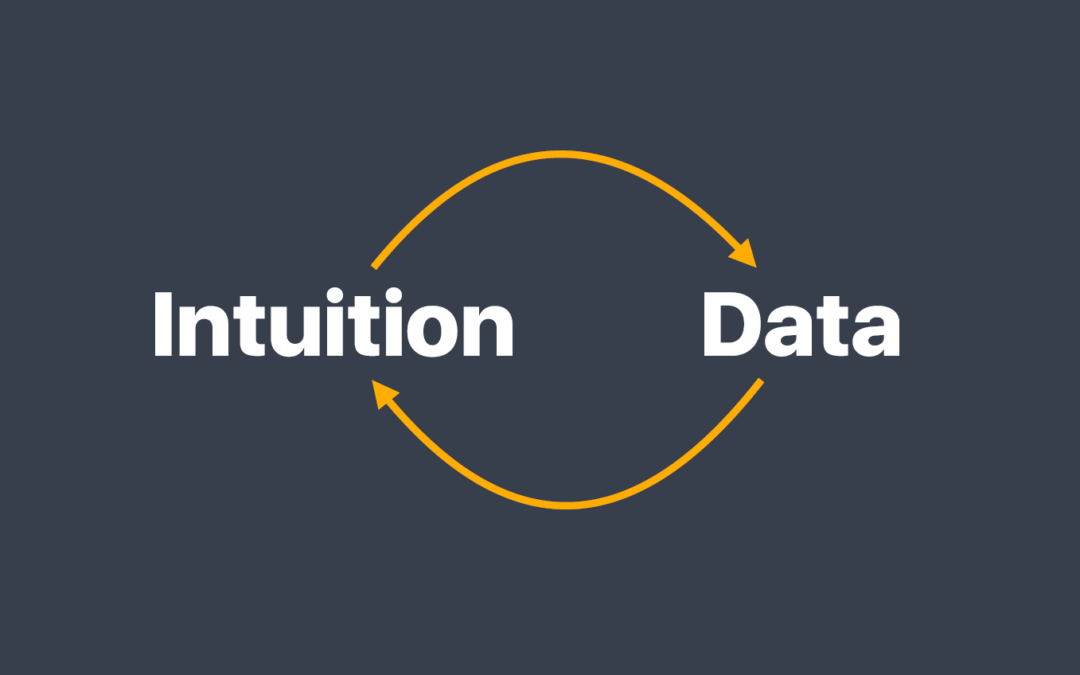
by Robyn Bolton | Sep 24, 2022 | Innovation, Strategy, Tips, Tricks, & Tools
In the Before Times, we attended conferences to learn, make connections, and promote ourselves and our businesses. Then COVID hit, and conferences became virtual. Although that made them easier to attend, it also made them easier to skip. Because, if we’re honest, most conferences were more about connecting and promoting than learning.
Last week, I went to one of those rare, almost mythical, conferences more focused on learning and connecting than promoting. It was fantastic! It was also in Nebraska (which is a pretty interesting place, btw).
Here are my three biggest mind-blowing takeaways from Inside Outside’s IO2022 Summit:
“Strategy is the direction you take to win in the future“
Kareen Proudian, Managing Partner at Faculty of Change
It’s a bit embarrassing to admit, but if you asked me to define “Strategy,” I’d respond with a long and rambling answer. Which means I can’t define “strategy.” This admission is especially embarrassing because I have a resume littered with places where I developed, drafted, and implemented strategies, so I should have learned what the word means. But nope, I didn’t.
I suspect I’m not alone.
Asking for the definition of strategy is like asking if you must wear clothes to the office. You should know the answer. But unlike whether or not clothing is mandatory, most of us don’t know the answer, AND it’s easy to get away with never knowing the answer.
The elegant simplicity of Kareen’s definition of strategy blew my mind. It’s short, memorable, and something that most people can understand. Maybe I should share the definition with my alma maters and past employers.
“When we feel threatened, our IQ drops 50 to 70 points”
Alla Weinberg, CEO at Spoke & Wheel
When I first heard talk about Psychological Safety and Safe Spaces in today’s business world, I rolled my eyes. Hard. As a Gen X-er, I grumbled about how we didn’t need “safe spaces” when I grew up because we were tough and self-reliant, and I lamented the inevitable downfall of society caused by weak and coddled Millennials.
I was wrong.
Psychological Safety is absolutely and unquestionably essential for individuals to grow, teams to work, companies to operate and innovate, and societies to function and evolve. I’ve seen teams and businesses transform and achieve unbelievable success by discussing and living the elements they require for Psychological Safety. I’ve also seen teams and businesses fail in its absence.
These results aren’t surprising when you realize that you feel threatened when you are in a complex situation in which you cannot accurately predict the outcomes. And when you feel threatened, you are half as intelligent, effective, and creative as you are when you’re calm.
So, if you’re a manager and you’re upset that your people aren’t as intelligent, effective, or creative as they should be, it may not be their fault. It may be yours.
“Stage expertise, not industry expertise, is key to innovation success“
Sean Sheppard, Managing Partner at U+
There is deep comfort in the known. It’s why we gravitate to people like us. It’s also why companies ask job candidates and consultants about their experience in the industry and choose those with deep experience and impressive expertise. Often, there’s nothing with this question or the resulting decision.
Sometimes, it’s precisely the wrong question.
Sometimes, functional expertise is significantly more important than industry experience. After all, if you’re the hiring manager at a healthcare company looking for a Director of Finance, who would you hire – a Marketing Director from a competitor or a Finance Director from a CPG company?
That’s the case with innovation.
Decades of real-world experience (not to mention the successful launch of 100+ startups) show that successful corporate startup teams had expertise (mindsets, skillsets, executional drive) in the startup’s phase and a working knowledge of the industry rather extensive industry expertise and little to no innovation experience.
Questions are good. The right questions are better. So, the next time you’re staffing up an innovation team (or hiring a consultant), choose based on their innovation experience and willingness to learn about your industry.
Innovation happens everywhere
That’s why people from San Francisco, Austin, Washington DC, NYC, Toronto, Boston, and dozens of other places converged on Lincoln, Nebraska.
We went to see innovation in action and learn about the thriving startup community in the middle of the country. We also went to learn and connect with others committed to creating new things that create value.
Getting our minds blown was a bonus.

by Robyn Bolton | Aug 26, 2020 | Customer Centricity, Tips, Tricks, & Tools
“When you say, ‘uh-huh’ over and over like that, I can tell you’re not listening to me.”
Me, age 7, to my mom
It doesn’t take a lot of experience to know when someone isn’t listening. From a young age, we can tell when someone is listening and when they’re simply responding.
When we’re with the person, we notice the lack of eye contact or the blankness in their eyes showing us where their thoughts are actually at. When we’re on the phone, we hear the repetitive and monotone mumbles that tell us they’re attention is elsewhere.
Yet often, what we want most is simply to be listened to.
This is true in our personal relationships and in our relationships with the businesses and organizations we support. We want people and businesses to listen to our opinions, to understand them, and to thoughtfully respond to them.
Instead, people and businesses simply “hear” us.
There’s a big difference between listening and hearing
According to the Oxford University Press, hearing is “the faculty of perceiving sounds” while listening is “give one’s attention to a sound” and “take notice of and act on what someone says.”
As I explain to my clients, surveys, focus groups, and even in-depth qualitative research is often a Hearing exercise – the company develops a list of questions, asks their customers to answer the questions, then tabulates the answers and passes them along to whoever needs them.
This is a transaction. An exchange of information. It is not listening.
Listening requires engagement. It happens during EPIC conversations, those typified by empathy, perspective, insights, and connection.
Listening accelerates innovation and drives transformation. When we’re listening, we’re learning new information and discovering new insights, which enables companies to create and act differently, differentiating themselves from the competition and ultimately gaining an advantage.
Listening takes practice but here are 5 simple steps to help you get started:
- Drop the agenda – Before you have a conversation within someone, identify the 1-3 things you need to learn and leave space for at least 1 surprise. If you go into a conversation with an agenda or a long list of questions, you’re only going to hear what you want to hear because your mind is primed to seek confirmation for your opinions and to reject anything counter to what you’re hoping to hear.
- Follow where they lead – During the conversation, don’t worry about trying to steer the conversation or “keep things on track.” If you only need to learn 3 things in the conversation and you have 30 minutes or an hour, you have plenty of time for tangents, stories, and random connections. This is where the surprises and the insights come from.
- Ask Why – Channel your inner two-year-old (or Toyota Production employee) and ask “Why” multiple times. When you ask “Why” you get personal, surprising answers that point to the motivations behind people’s choices and actions. When you ask “What” you get rational, expected, even obvious answers that you, and your competitors, have heard before.
- Say as little as possible – Follow the 80/20 rule and spend 80% of your time listening. When you ask a question, don’t go into a long pre-amble about why you’re asking it or follow it with a long list of options or examples. Simply ask the question and the answer will come.
- Let the silence work for you – After you ask a question, start counting silently in your head. Before you get to 8, the person you’re listening to will start talking. Silence makes people uncomfortable but it’s also when the brain goes into exploration and discovery mode. And the longer the silence goes on, the faster the brain works to come up with something to fill it. So, stay quiet and let the brain work!
Whether you’re talking to a customer, a colleague, or a friend, you’re talking to someone who wants you to listen, to hear and understand what they are saying. These 5 tips will help you do that and, if done well, discover something wonderful and unexpected with the power to transform.
Originally published on April 20, 2020 on Forbes.com

by Robyn Bolton | Aug 6, 2020 | Customer Centricity
If you’re innovating without involving your customers, you’re wasting time and money.
I believe this so deeply that I require all of my clients to spend time talking with and listening to their customers at least once during our work together. Investing in customer research, I explain, is the single smartest and best investment that any business can make. Just 5 or 10 customer conversations can dramatically alter the course of an initiative, positioning it for incredible success or killing it before too much time, energy, and money is wasted.
Understanding your customers, especially through Jobs to be Done, is the hill I will die on.
But I actively resist doing this for my business.
The idea of interviewing my customers, or investing to understand their Jobs to be Done, or altering aspects of my business based on their feedback triggers a cold sweat and a very real flight response.
So why is my business different? (It’s not)
Why am I such a customer research hypocrite?
Here are the thoughts that run through my head when I consider talking to my own customers:
- I’m supposed to be the expert in this, what if they tell me something I haven’t thought of?
- What if my customers say they don’t like or want what I’m doing and would like or want something I’m not?
- What if I do try something new and it fails?
It is SO much easier, and it feels so much safer, to keep doing what I’m doing because it’s what I’ve always done and it’s what bigger and more “successful” firms do.
I suspect that I’m not the only one with these thoughts.
Over the years, I’ve spoken with lots of corporate innovators who proposed customer research only to be told, “We already know what we need to know” or “we did research a few years ago, let’s just use that,” or “sure, but we don’t have the resources right now so check back next quarter.”
These reasons make sense. On the surface.
We all know that getting feedback is key to keeping customers and it’s cheaper to keep a customer than acquire a new one. We’ve heard AG Lafley, P&G’s former CEO, proclaim “the consumer is boss.” We understand that when Steve Jobs said he didn’t do customer research it was because he and his inner circle were the customers they designed for and the rest of us would catch-up.
So we come up with reasons why something else (waiting, referring to old data) is a better option. We decide with our hearts (emotions) and justify with our heads. We give logical reasons – we already know this, we’ve already done this, we can’t do this now – so that we don’t have to confess the emotional reasons – fear, discomfort, insecurity – for refusing to do something that seems like common (business) sense.
How do we overcome these emotional barriers?
How do we overcome the fear and take action?
Here’s what I’m doing:
- Remember “Will the Real You Please Stand Up?” the great poem my dad gave me – “If you move with the crowd, you’ll get no further than the crowd. When 40 million people believe in a dumb idea, it’s still a dumb idea. Simply swimming with the tide leaves you nowhere.”
- Find my big-girl pants. Put them on.
- Take a deep breath
- Write down what I want to learn, especially if it scares me
- Find someone to help me do the research or, better yet, do it for me so I can avoid the emotion and engage in the insights
- Do the research
- Listen to and be curious about the results (if I’m defensive, I will not benefit)
- Create an action plan and get moving
Honestly, I’m on step 4 and really not looking forward to 5, 6, and 7 but I know that, when this is all done, my business and I will be better off.
At the very least, I will no longer be a hypocrite.

by Robyn Bolton | Jul 29, 2020 | Customer Centricity, Innovation, Strategy
Over the past several weeks, I’ve kicked off innovation projects with multiple clients. As usual, my clients are deeply engaged and enthusiastic, eager to learn how to finally break through the barriers their organizations erect and turn their ideas into real initiatives that generate real results.
Things were progressing smoothly during the first kick-off until a client asked, “Who’s my customer?”
I was shocked. Dumbfounded. Speechless. To me, someone who “grew up” in P&G’s famed brand management function and who has made career out of customer-driven innovation, this was the equivalent of asking, “why should I wear clothes?” The answer is so obvious that the question shouldn’t need to be asked.
Taking a deep breath, I answered the question and we moved on.
A few days later, the question was asked again. By a different client. In a different company. A few days later, it was asked a third time. By yet a different client. In yet a different company. In a completely different industry!
What was going on?!?!?
Each time I gave an answer specific to the problem we were working to solve. When pressed, I tried to give a general definition for “customer” but found that I spent more time talking about exceptions and additions to the definition rather than giving a concise, concrete, and usable answer.
That’s when it struck me – Being “customer-driven” isn’t enough. To be successful, especially in innovation, you need to focus on serving everyone involved in your solution. You need to be “stakeholder-driven.”
What is a customer?
According to Merriam-Webster, a customer is “one that purchases a commodity or service.”
Makes perfect sense. At P&G, we referred to retailers like WalMart and Kroger as “customers” because they purchased P&G’s products from the company. These retailers then sold P&G’s goods to “consumers” who used the products.
But P&G didn’t focus solely on serving its customers. Nor did it focus solely on serving its consumers. It focused on serving both because to serve only one would mean disaster for the long-term business. It focused on its stakeholders.
What is a stakeholder?
Setting aside Merriam-Webster’s first definition (which is specific to betting), the definitions of a stakeholder are “one that has a stake in an enterprise” and “one who is involved in or affected by a course of action.”
For P&G, both customers (retailers) and consumers (people) are stakeholders because they are “involved in or affected by” P&G’s actions. Additionally, shareholders and employees are stakeholders because they have a “stake in (the) enterprise.”
As a result, P&G is actually a “stakeholder-driven” company in which, as former CEO AG Lafley said in 2008, the “consumer is boss.”
How to be a stakeholder-driven organization
Focusing solely on customers is a dangerous game because it means that other stakeholders who are critical to your organization’s success may not get their needs met and, as a result, may stop supporting your work.
Instead, you need to understand, prioritize, and serve all of your stakeholders
Here’s how to do that:
- Identify ALL of your stakeholders. Think broadly, considering ALL the people inside and outside your organization who have a stake or are involved or affected by your work.
- Inside your organization: Who are the people who need to approve your work? Who will fund it? Who influences these decisions? Who will be involved in bringing your solution to life? Who will use it? Who could act as a barrier to any or all of these things?
- Outside your organization: Who will pay for your solution? Who will use your solution? Who influences these decisions? Who could act as a barrier?
- Talk to your stakeholders and understand what motivates them. For each of the people you identify by asking the above questions, take time to actually go talk to them – don’t email them, don’t send a survey, actually go have a conversation – and seek to understand they’re point of view. What are the biggest challenges they are facing? Why is this challenging? What is preventing them from solving it? What motivates them, including incentives and metrics they need to deliver against? What would get them to embrace a solution? What would cause them to reject a solution?
- Map points of agreement and difference amongst your stakeholder. Take a step back and consider all the insights from all of your stakeholders. What are the common views, priorities, incentives, or barriers? What are the disagreements or points of tension? For example, do your buyers prioritize paying a low price over delivering best-in-class performance while your users prioritize performance over price? Are there priorities or barriers that, even though they’re unique to a single stakeholder, you must address?
- Prioritize your stakeholder by answering, “Who’s the boss?” Just as AG Lafley put a clear stake in the ground when he declared that, amongst all of P&G’s stakeholders, that the consumer was boss, challenge yourself to identify the “boss” for your work. For medical device companies, perhaps “the boss” is the surgeon who uses the device and the hospital executive who has the power to approve the purchase. For a non-profit, perhaps it’s the donors who contribute a majority of the operating budget. For an intrapreneur working to improve an internal process, perhaps it’s the person who is responsible for managing the process once it’s implemented. To be clear, you don’t focus on “the boss” to the exclusion of the other stakeholders but you do prioritize serving the boss.
- Create an action plan for each stakeholder. Once you’ve spent time mapping, understanding, and prioritizing the full landscape of your stakeholder’s problems, priorities, and challenges, create a plan to address each one. Some plans may focus on the design, features, functions, manufacturing, and other elements of your solution. Some plans may focus on the timing and content of proactive communication. And some plans may simply outline how to respond to questions or a negative incident.
Yes, it’s important to understand and serve your customers. But doing so is insufficient for long-term success. Identifying, understanding, and serving all of your stakeholders is required for long-term sustainability.
Next time you start a project, don’t just ask “Who is my customer?” as “Who are my stakeholders?” The answers my surprise you. Putting those answers into action through the solutions you create and the results they produce will delight you.
Originally published on March 23, 2020 on Forbes.com

by Robyn Bolton | Jul 23, 2020 | Innovation, Tips, Tricks, & Tools
“We need more data.”
How many times have you heard this? How many times have you rolled your eyes (physically or mentally) and then patiently tried to explain that, when you’re doing something NEW, there is NO DATA.
There are analogous innovations, things that are similar in some ways that can be used as benchmarks, but nothing exactly like what you’re creating because nothing like it has existed before within your company.
As Innovators, we constantly balance our need for and comfort with gut decisions so we can move forward at speed with the broader organization’s need for data and certainty as a way to minimize risk.
But what role should intuition and data play in the early days of innovation?
This is exactly the question that my friend and former colleague, Nick Pineda, sought to answer in his thesis, “Are relevant experience and intuition drivers of success for innovation decision-makers? An interview-based approach”
Robyn: Hi Nick! Thanks for taking the time to speak with me today. The topic you explore in your thesis is fascinating and something every innovator struggles with. I’m curious, what led you to decide to explore it?
Nick: Interestingly, the process of deciding what to write my thesis on actually inspired the topic itself.
For the capstone of my Masters program, we were told to do a consulting project but I had spent so many years in consulting that I wasn’t terribly excited about that prospect. One day, as I was walking to work, I felt this feeling in my gut that said, “Nick, this is not why you’re in the Masters program.” I shared this feeling with my professor and faculty advisor, and they were open to a different approach.
As we discussed what I could do, the same topic kept coming up – a lot of what is published about innovation, especially with Agile, is about measurement and that we need to have evidence before we take action. I don’t disagree with that but viewing things only through that lens kills the wisp of an idea that has the potential of becoming something amazing. Ultimately, we decided to focus my thesis on what happens on the front-end of the innovation process and whether intuition or evidence and data lead to success.
Robyn: And, what did you learn?
Nick: Two things, one that wasn’t surprising and one that was.
First, what wasn’t surprising is that innovation decision-makers have a really clear awareness about the role that gut feel or intuition, knowing without knowing how you know, play in their process.
Second, what was surprising, is that anyone who leans much more heavily in one direction versus another (data vs intuition), had many more failures, and struggled to process what they learned from those experiences and incorporate those learnings into future actions and decisions. Successful innovators know how to create a dance between their rational processes and their intuitive processes.
Robyn: It seems so, well, intuitive that using both intuition and data to make decisions will lead to better outcomes. However, so many innovators rely on intuition and so many companies require data, how can you encourage that “dance” that’s required for success?
Nick: You need to start small.
First with the person who’s innovating, to help them enter that inner space and recognize all the different ways that intuition can show up. It can manifest as a sensory experience, a change in temperature, even a color. It varies by person and by moment and the key is to recognize when it’s happening.
A simple way to create this awareness is to reflect on how you decide whether to trust someone. Every time you meet someone new, you have to quickly decide whether or not to trust the person. How do you do that? What is the feeling or sense that you get that leads to your decision? How often are you right?
Next, you need to create a language or process within the team to externalize the intuitive sense. In my research, I found examples of visionary leaders who were constantly able to use their intuitive sense, but their teams were constantly felt left out and wondering why they did all the work when the leader was just going to decide on gut. More successful teams were much more open about why, when, and how they were using their intuition, even specifically asking other team members to share their intuition in meetings.
Then, as leaders, we need to normalize the fact that we’re not always going to have precise evidence to know what the right call is and that we’re trusting what we’ve learned as leaders in this space to make a decision.
Robyn: That last point is really critical, leaders must role model the behavior they want to see and that includes using and communicating their intuition. Anything else pop up with respect to leaders and decision-making?
Nick: Ideally, leaders will go beyond normalizing the use of intuition to actively working to dismantle the organization’s bias against it.
Most organizations consciously or subconsciously, defer to the highest paid person or the most credentialed person in the room when making decisions. This is a highly rational behavior, but it doesn’t lead to the best decision. The reason is that it overlooks the fact that diversity of experience surfaces other data points and intuitive experiences that need to be part of the conversation to get to a better decision.
Innovation is a group experience and when intuition is allowed to show up in groups a group intelligence starts to manifest and the group makes better decisions.
Robyn: That’s quite a To-Do list for leaders and decision-makers:
- Manage your personal dance between intuition and data
- Normalize intuition by creating a language around it
- Create ways to tap into diverse experiences and intuition
Thanks so much for sharing these great insights, Nick!
Nick: My pleasure.
****
To learn more about intuition and innovation, Nick recommends that you:
READ:
WATCH or LISTEN TO:
TAKE ACTION and Conduct an idea retrospective
-
- Anchor on an idea
- Think back to a memorable innovation success or failure?
- What was the idea?
- Where did the initial idea come from?
- If you had to pick 1-2 of the most important decisions you had to make in the process of bringing this idea to life, what were those decisions?
- Did you use intuition?
- Intuition defined: Intuition is a process of rapidly recognizing things without knowing how we do the recognizing, which results in affectively charged (somatic, sensory, or emotional experience) judgements.
- To what degree was your process intuitive?
- To what degree were you aware of what your brain was doing to seek an answer / path forward?
- How did your intuition show up?
- Signals / Cues: What signals or cues did you have about which course of action to take or not to take?
- Knowing: How did the answer for which path forward to take “show-up” for you? Where were you? What did it feel like?
- Feeling: What did you feel during this process?
- Apply More Broadly
- In what ways is the way you explored your intuition in this case similar (or not) to other decisions you make in your life?
- How might you be more intentional about how to bring your personal brand of intuition into your innovation process?




